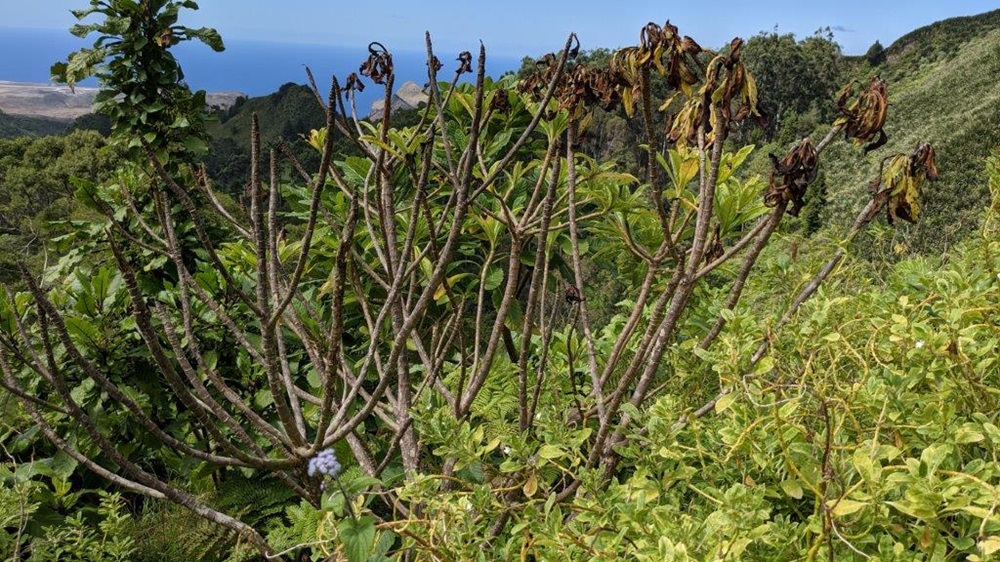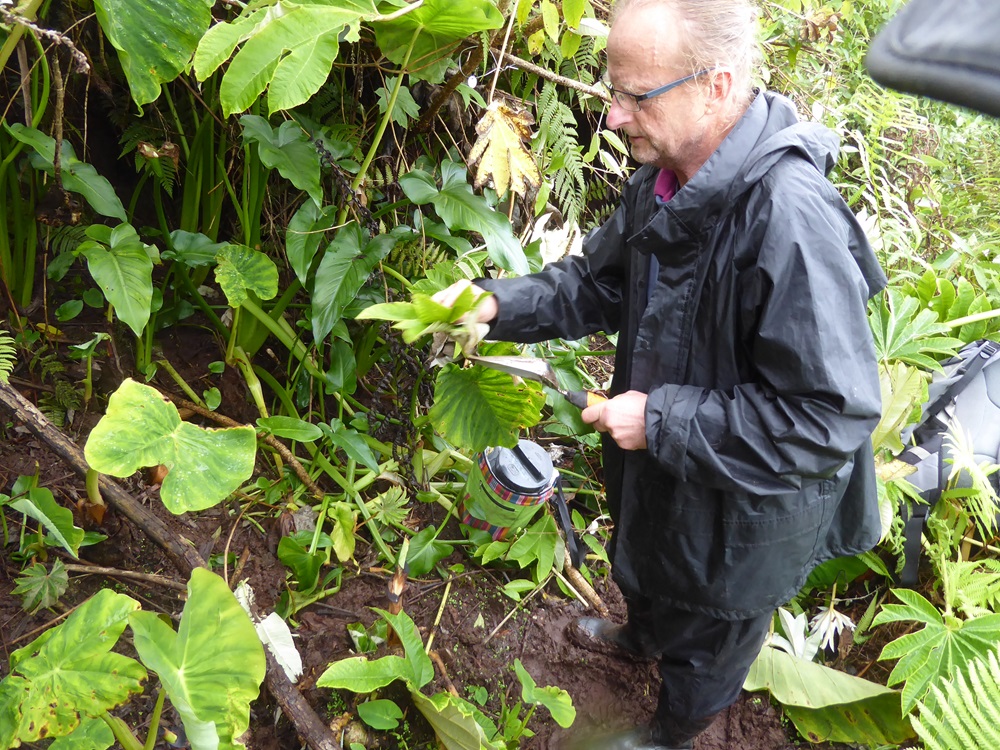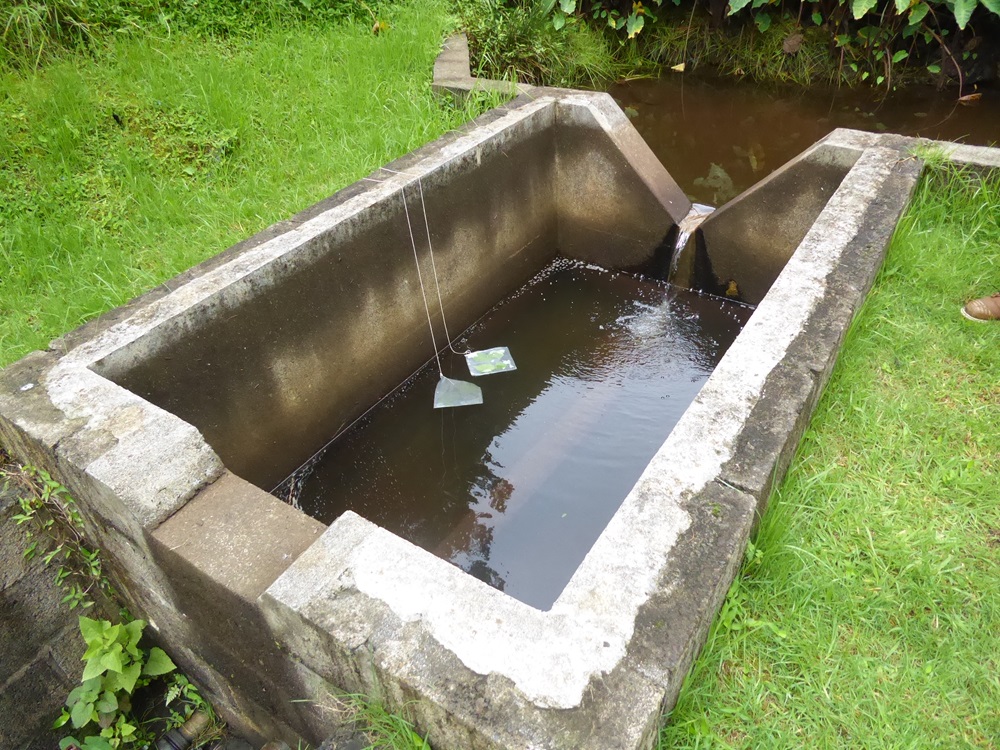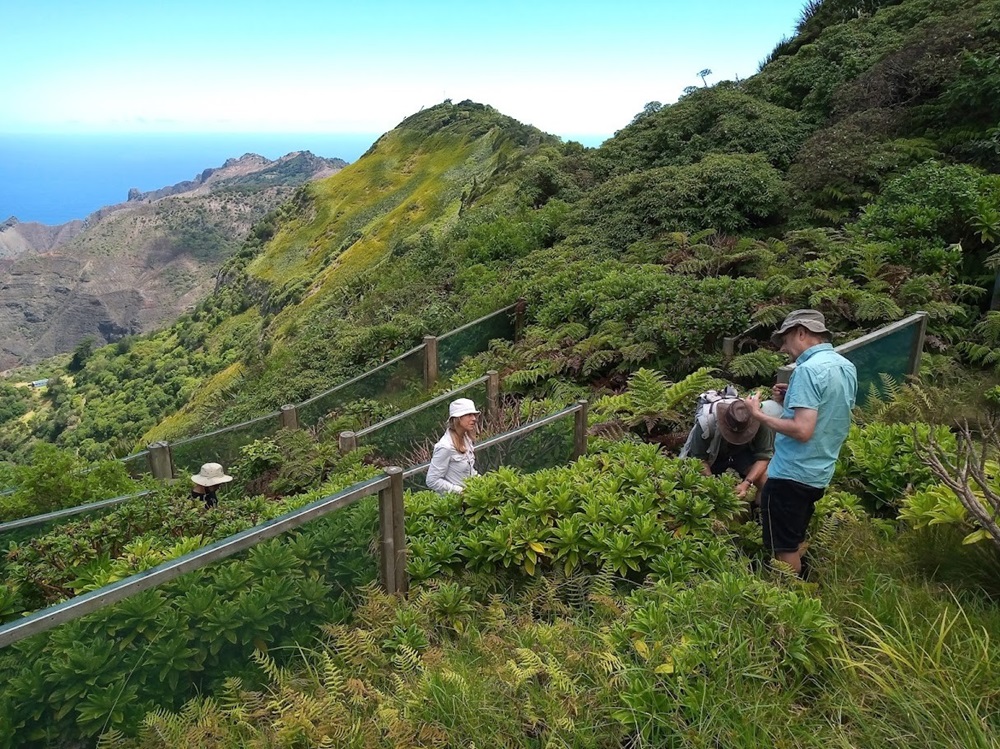
Conclusions from four-year research looking into the dieback of critically endangered trees
The remote island of St Helena is a small speck in the vast South Atlantic Ocean, renowned for its rich history and isolation. It is the United Kingdom’s second-oldest overseas territory, after Bermuda.
St Helena gained international fame as the place where Napoleon Bonaparte was exiled following his defeat in June 1815. He spent his final six years on the island until his death in 1821.
Despite its small size and remote location, St Helena continues to be an important link to the legacy of the old British Empire and a unique destination shaped by its dramatic history as well as its flora and fauna.
Decline and death of the endemic trees of St Helena
A team of scientists from CABI have been working on the decline and death of the endemic trees of St Helena since 2022. The trees are believed to be living relicts, from a time millions of years ago, when lush, wet forests blanketed the island. Their closest relatives likely came from mainland Africa, but those species have long since gone extinct.
The uniqueness of St Helena’s flora was recognised by Charles Darwin, who in 1844 remarked: ‘St Helena versus the world would perhaps be the first division of a phytogeographical system’ (cited in Cronk, 2000). The endemic trees also support a complex ecosystem found nowhere else on earth.
Despite intense conservation efforts over more than 20 years to propagate endemic trees and to restore the unique cloud forest in St Helena, many of the planted trees were not surviving and the older, naturally established trees were dying at an alarming rate.

Over four years a consortium of CABI, the Environment, Natural Resources & Planning (ENRP) and St Helena Research Institute (SHRI) was funded by grants from the Darwin Initiative and the Department for Environment, Food and Rural Affairs (Defra) to investigate the decline of the trees and other endemics.
When CABI plant pathologists first arrived on the island in early 2022 there was no indication as to what was causing the death of these trees; it could have been plant diseases, pests or abiotic factors such as climate change or a combination of all of the above.
Roots and tips of dying plants and isolating the associated microbes

After being shown the scale of the problem, and the symptoms which the trees were displaying, the team began by taking samples from the roots and tips of dying plants and isolating the associated microbes. Hundreds of isolates were taken back to CABI’s lab headquarters in Egham, UK, for further investigation.
Many of the isolates turned out to be well-known fungi, commonly isolated from soil and dead material, however several piqued the interest of the CABI team as there were known to be plant pathogens.
One isolate, later identified as a Phytophthora, was obtained from a whitewood tree (Petrobium arboreum), which had died very recently. This tree species is one of the critically endangered endemic trees in St Helena and this individual had been found in a living gene bank located on the edge of the peaks national park, which contains the remaining fragments of the remaining cloud forest on the island.
“This was the first indication that there was Phytophthora on the island, and we were fortunate to find it on our first visit” said Dr Phil Taylor of the CABI team. “Phytophthora species are well known for their ability to kill trees” he went on to say.
Nor was the Phytophthora the only candidate isolated from the dying trees
However, as Dr Rob Reeder pointed out, finding a potential pathogen near a dead or dying tree is not proof that the microbe was responsible for the tree’s demise. Nor was the Phytophthora the only candidate, isolated from the dying trees, that is known to be a tree pathogen.
The isolates were characterised in Egham, but it was not possible to do any pathogenicity testing in Egham because the endemic trees only grow in St Helena. After sequencing the DNA of the Phytophthora isolate, CABI scientist, Dr Alan Buddie was able to say that the isolate was P. kelmanii,a species only formally described in the year our project started, but by 2023 already predicted to be highly invasive.
Despite not having access to the endemic trees, the work progressed, and Lisa Offord began pathogen testing on locally available garden plants, under quarantine conditions in Egham, to investigate if the Phytophthora strain was a pathogen of garden plants.
Her experiments showed Argyranthemum to be susceptible, providing a model for pathogenicity testing. which could also be applied in St Helena. She also developed a means of testing for the Phytophthora in the soil, using leaves from local herbs. A soil sample was saturated with water and leaves from local herbs were floated on the surface; if Phytophthora was present it would begin to rot the outer edges of the leaves.
Despite all this work, Phytophthora only remained a potential candidate for the death of the trees, until the pathogen had been inoculated onto healthy tree seedlings and those trees died, the idea that Phytophthora was responsible remained speculation. This testing had to be conducted in St Helena but required a safe environment to prevent any further spread of the pathogen on the island.
Answer was to build on-island quarantine facility to contain the microbe
The answer was to build on-island quarantine facility to contain the microbe. Additional funding from Defra enabled the construction of a quarantine facility whereby the microorganisms could be tested on the endemic seedlings. This facility was built well away from the main nursey used for rearing the trees to be planted on the peaks.

Adhering to international quarantine regulations, the Phytophthora strain isolated in St Helena and identified in Egham was re-imported on an agar plate but grown up on boiled rice before being inoculated onto the test plants. Boiled rice grains were pushed into the root zone of the test plants some with, and some without, being infected with the Phytophthora.
After three weeks the results were clear, plants infected with Phytophthora were dying whereas those that just received boiled rice were fine. Phytophthora was subsequently isolated from the roots of the infected plants proving that the pathogen had infected the plants and was responsible for their death.
Once it had been ascertained that Phytophthora could kill trees, a large survey was carried out to determine where the pathogen was on the island. Over 400 soil samples from all over the endemic tree regions were taken and sampled for P. kelmanii.
The detection method involved floating sage (Salvia officinalis) and whiteweed (Austroeupatorium inulifolium) leaves on water-saturated test soil and then using Loop Mediated Isothermal Amplification (LAMP) detection, with bespoke taxon-specific primers, which targeted the Phytophthora DNA which had been obtained by extraction from the lesions that had developed at the edges of the leaves.
Local scientists were heavily involved in both the soil collection and the LAMP assays. At the end of a 6-week period a map was constructed displaying the spread of P. kelmanii within the national park, and in other sites growing endemic trees.
Unfortunately, P. kelmanii was detected widely across the island even in areas where there had been no human traffic for several years. The Phytophthora positives were often, but not exclusively, associated with extremely wet/waterlogged areas.
Expanding the testing to the water courses

This led to the suggestion that the Phytophthora spores were being washed down in the water running from the peaks. Therefore, baiting bags were sewn and bait leaves inserted; these were positioned in the streams and gullies running off the peak; the intention was that should Phytophthora be in the water it would infect the leaves.
After four days the baiting bags were retrieved and tested. The positive result was a considerable surprise with our Phytophthora species being present in four of the five streams initially tested.
Two questions that are repeatedly asked are: where did the Phytophthora come from, and how long has it been on the island? Collaborators at BIFOR Birmingham Forest research are collaborating with CABI and are working on these questions, which are complex and not easy to answer.
The restoration work is continuing, and plants are being raised, ready to be planted out in large numbers. However, as a result of the Darwin Plus DEFRA grant, all plants are being raised in a Phytophthora-free environment and are being tested before being planted out in the wild.
The endemic trees of St Helena are still under threat but at least one of their adversaries has been identified and is being dealt with.
Additional information
Main image: Bert Leo and Zac Bargo sampling for Phytophthora at the base of a Black Cabbage tree.
Relevant stories
Project to investigate the microbial diseases of St Helena’s crop plants takes root – CABI Blog
1 Comment
Leave a Reply
Related News & Blogs
Project to investigate the microbial diseases of St Helena’s crop plants takes root
St Helena is famous for its unique habitats from the lush endemic cloud forests on the peaks to the dry and rocky coastal fringes. Many of the islands plants and invertebrates are found nowhere else on earth and their populations and diversity have bee…
14 March 2022



Great work protecting St Helena’s unique trees!